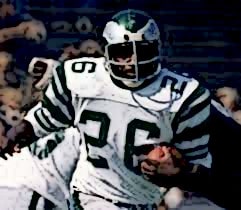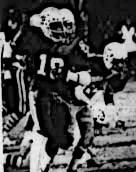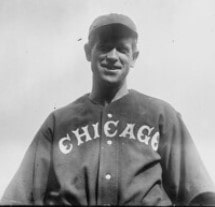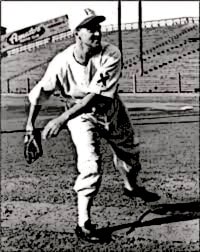WARREN BALLPARK MEMORIES
- Travis @ Big Jeep Tours

- Dec 25, 2023
- 9 min read
Updated: 6 days ago
WARREN BALLPARK PLAYED A HUGE ROLE IN YOUR TOUR GUIDE'S CHILDHOOD

Narrated by your Native Bisbee Big Jeep Tours Guide
THE WARREN BALLPARK IS IN THE HEART OF BISBEE, ARIZONA
Warren Ballpark, established in 1909, is a significant landmark in Warren, Arizona, and a notable piece of American sports architecture. As the second structure in Warren, Arizona's first planned community, it symbolizes the town's historical importance. Warren's layout was influenced by the "City Beautiful" movement, a design philosophy that aimed to create aesthetic harmony to foster social order and efficiency. This movement also influenced Washington D.C.'s design, and Warren Ballpark was integral to this vision, embodying the concept of beauty and community coherence.
The design of the ballpark is linked to Charles Comiskey, the then-owner of the Chicago White Sox, who contributed to its design. This association with a prominent baseball figure enhances the park's historical value.

From an architectural perspective, Warren Ballpark stands out for its distinctive features. While it maintains a traditional baseball field layout, it also includes football bleachers behind the center and right field fences, showing that it was used for both baseball and football. This multipurpose nature showcases the foresight and adaptability of its designers.

The park is encircled by a tall, green-painted wooden fence, adding to its classic American ballpark ambiance. The grandstands, constructed of concrete and adobe, reflect local architectural styles, harmonizing the structure with its surroundings in Arizona.
Beneath the grandstands, a network of tunnels and rooms run through the foundation and basements, hinting at a complex and multifaceted history. This aspect of the ballpark adds a layer of intrigue and historical depth.
The fan-shaped layout of Warren, with the ballpark at its base, highlights the venue's pivotal role in the town's design and social fabric. More than just a sports facility, it's a symbol of the aspirations and community spirit of early 20th-century American town planning.

Overall, Warren Ballpark is more than a historic sports venue; it represents a blend of early American urban planning, architectural innovation, and the integration of sports into community life. Its unique characteristics and historical significance make it an important landmark in both Arizona and the broader context of American sports history.
WARREN BALLPARK, YOUR TOUR GUIDE, AND A BISBEE WEATHER LESSON
My earliest memories of Warren Ballpark are vividly tied to the football games I watched while my dad was part of the chain gang, handling the down marker. During these games, I had the freedom to explore, as my mom wasn't interested in football and my sisters were too young to understand the excitement. A standout memory from this period is the 1976 Bisbee/Douglas rivalry game, a much-anticipated local event.
That year, a friend from school was staying over at my house, and we went to the game with my dad. We were free to roam and seek out our own adventures, filled with the kind of mischief that's typical for kids our age. The day started off clear, but a hurricane that originated in the Pacific Ocean was making its way toward Bisbee. By the time the game started, the hurricane had reached us. Although it had lost its strong winds by then, it brought a relentless downpour of cold rain.
My friend and I were ill-equipped for this weather, sharing just one thin sweat jacket between us. As the game began, the rain turned into a steady, heavy drizzle, and we started to feel cold. We kept running between the sheltered areas under the baseball grandstands and the end zone, trying to catch glimpses of the game while staying as dry as possible. Sharing the sweat jacket – one arm each through a sleeve – wasn't enough to keep us warm.
I vividly remember watching the Bisbee Pumas team in their all-red uniforms, especially their all-state quarterback, skillfully leading his team during a critical moment near the goal line. This happened while the field was being pummeled by sheets of rain. That scene – a mix of strategic gameplay and resilience against the harsh elements – remains a defining memory of my experiences at Warren Ballpark.
WORKING AT THE WARREN BALLPARK
My time as a spectator at Warren Ballpark's football games was over by 6th grade for me. My father, recognizing my enthusiasm, appointed me as the clip runner for the chain gang during high school football games. This wasn't just a job; it was an honor. It allowed me to be right at the forefront, watching teams up close that would later emerge as state champions.
This role immersed me in the game's atmosphere. I could smell the intensity of the battle on the field, and hear the coaches as they directed and disciplined their players. The physical aspects of the game were vividly clear: the hard hits, the visible efforts of the players, and the sheer energy of the game were all part of my experience.
From 1977 to 1979, several moments stood out. There was a quarterback from Miami High School, known for his aggressive style, who seemed to relish the physical aspect of the game, often seeking out contact. Another memory is of a Deming High School kicker who managed an incredible feat: his kickoff went beyond the goalpost, over a large fence, and landed in a cottonwood tree far beyond the field.
One of the most memorable experiences was watching the state champion Santa Cruz - Eloy team, which included two future NFL players. Their presence on the field was commanding yet subdued. They stood silently on the sidelines, focused and disciplined, watching the game unfold. Their skill was undeniable, as evidenced by their 56-0 lead at halftime. In an unusual turn, I saw their coach instruct the running backs to intentionally fumble the ball, and his frustration when they didn't succeed in this unconventional strategy.
The commitment of the visiting fans was also noteworthy. I remember overhearing the only two Santa Cruz fans who had made a long journey to support their team, expressing disappointment over the game's one-sided nature.
These experiences, viewed from the unique vantage point of the chain gang, provided me with rich and intimate insights into high school football during my formative years.
WARREN BALLPARK BATTLES BEGIN
In the autumn of 1977, my journey in competitive sports began when I joined the Lowell School Cobras as a sixth-grader. Dressed in our striking team colors of purple and gold, we were a well-known force in the local football scene. As one of the smaller players in my grade, I quickly came to realize that the protective gear in football was not as effective as I had hoped in shielding us from the physical challenges of the game.

Despite my size, I managed to secure a starting position on the team, playing as a safety - a role typically assigned to players who were quick and agile. Our games were held during the bright afternoons at the historic Warren Ballpark, where the sun casts a golden glow over the field, making our uniforms shine even brighter.
A memorable highlight was an interception I made against the Nogales team, a feat that filled me with immense pride and joy. However, the most unforgettable experience came during a match against the Willcox team.
As we lined up for the opening kickoff, the air was electric with anticipation. Clad in our gold jerseys adorned with purple numbers, and our helmets shining white in the sunlight, we looked every bit the formidable team we were known to be. It was then that a large player from the Willcox team, standing about 15 yards away, began barking like a dog, his eyes fixed on us. His intention was clear - to intimidate us. Fear gripped me; my eyes widened as I took in the bizarre scene.
But the mood swiftly changed when I glanced along my line of teammates. Our star player, unfazed by the Willcox player's antics, pointed at him and burst into laughter. His laughter, genuine and fearless, rippled through our team, and soon enough, we were all laughing - some of us even pointing and mimicking the barking. This moment of shared humor transformed our apprehension into a bond of unity and confidence.
Riding on this wave of camaraderie and uplifted spirits, we played with exceptional vigor and teamwork. That day, not only did we emerge victorious against the Willcox team, but we also learned a valuable lesson in facing intimidation with laughter and unity. It was a game that went beyond just a win; it was a testament to our team spirit and resilience.
WARREN BALLPARK IS PART OF EVERY BISBEE KIDS LIFE
My journey as an athlete began in the eighth grade, marked by an unforgettable graduation ceremony at Warren Ballpark during a rare snowstorm in May 1980. Bisbee, Arizona, known for its unpredictable and thrilling weather, offered a dramatic backdrop to this milestone. The only memento of that day is a photograph of me walking up the front porch, with large snowflakes swirling around, taken as we returned from the graduation in Galena.
That summer marked my debut as an athlete at Warren Ballpark, playing for the Bisbee Babe Ruth baseball team. Our team faced off against various opponents from neighboring cities, but the most memorable game was against our arch-rival, Douglas, Arizona. This game took place in August, during the monsoon season, adding an intense backdrop as lightning ignited a fire in the Mule Mountains. From the ballpark, we could see the fire's orange glow stretching two to three miles across the mountain crest behind Warren and the ballpark. The sight was dramatic, but we were safe and focused on defeating Douglas.
The decisive moment of that season came during our last game against Douglas. In Bisbee's final at-bat, we were trailing and needed two runs to win. The batter before me managed a walk to first base. When it was my turn, the Douglas pitcher threw a fastball, which I hit hard, sending a line drive off the left field foul pole, narrowly missing a home run. Shaking off the disappointment, I then hit the next pitch over the shortstop's head for a single into left field.
With runners on first and third and no outs, the pressure was mounting. I watched from first base as the next two batters struck out. Then, the final batter hit a weak grounder up the middle. Seizing the moment, I dashed for third base. The center fielder's throw missed the third baseman, and I scrambled to the plate, sliding in just in time to beat the throw home. We won the game, a thrilling victory made even more memorable by the glowing mountains in the distance.
Riding home with my parents back to Galena, I reflected on the exhilarating experience and the unique backdrop that Warren Ballpark and the Bisbee landscape provided for my first significant athletic achievement.
HIGH SCHOOL FOOTBALL GAMES AND INJURIES
When I was 14, I played as a starting receiver for Bisbee High School's football team. Our games at Warren Ballpark are still clear in my mind. I remember a tough match against Ajo High School, where a defensive back hit me so hard that my helmet cracked and I almost broke my jaw. My mouth was open when it happened, making the impact worse.
Another unforgettable game was against Douglas High School when I was still 14. As our team entered the field, we ran along the sideline to the 50-yard line, then across to our warm-up spots. Douglas's team was already there, with so many players they filled up the field from the 45-yard line to the end zone. I was pretty short back then, around 5 feet 4 inches, and as I ran past the Douglas players, they seemed like giants, almost 7 feet tall. They were a strong team, and they beat us badly that year and the next. But in my senior year, we held them to a close 6-3 game.
I'll never forget how my fellow safety, who played defense with me, would tackle the other team's players with such force it sounded like a gunshot when he hit people. In one intense moment, both of us went for a running back who had just caught a pass. I got there a split second before my teammate, managing to grab the running back's helmet. But then my teammate collided helmet-to-helmet with the running back, and my hand got caught in the middle. Every bone in my hand broke, and the running back ended up with a badly broken leg. My teammate got a concussion and was down for a few minutes. It was a rough moment in our high school football days.

My hand started swelling up and filled with blood, looking like a huge plum. I couldn't even touch my fingers together. I showed my coach, but instead of sympathy, I got a tough talk about being a man. So, I played the rest of the game at Warren Ballpark with a badly injured hand. It was a hard and memorable experience from my high school football days.
CONCLUSION
The Warren Ballpark in Warren, Arizona, isn't just famous for the stories I've shared as your tour guide; it has a rich history that goes beyond that. Built as the second structure in Warren, it was designed with the help of Charles Comiskey, the owner of the Chicago White Sox.
This ballpark is special because in the early 1900s, it was a stop for some of the greatest baseball players of all time. These Major League Baseball Hall of Famers were part of a traveling all-star MLB exhibition team that visited towns like Bisbee.
But the ballpark also has a more serious part of its history. In 1917, during a time known as the Bisbee Deportation, it was used by mining companies in a way that’s hard to forget. They gathered the miners who were on strike there, and then forced them onto cattle cars and sent them to the New Mexico desert.

You can learn more about the Warren Ballpark and its unique stories by joining one of our Bisbee Tours, presented by Big Jeep Tours. It’s a chance to see a place that’s not just a sports field, but a witness to some important events in our history.


















Comments